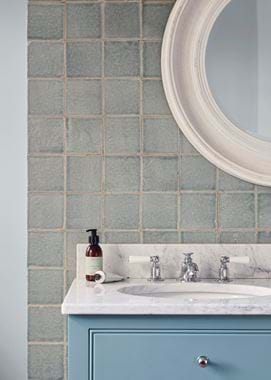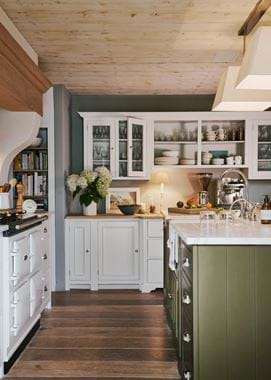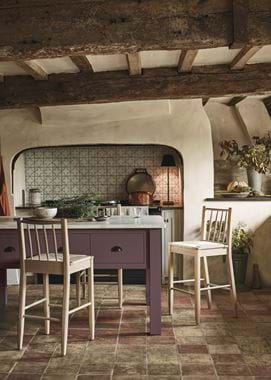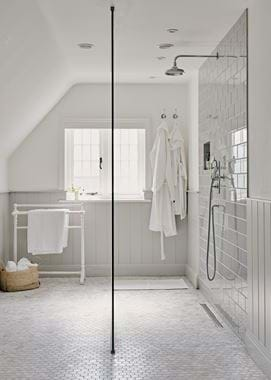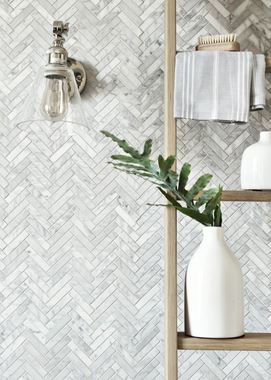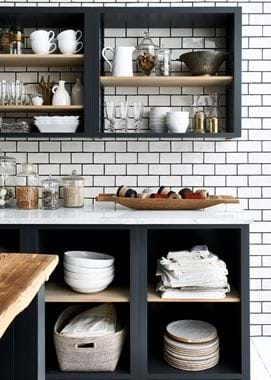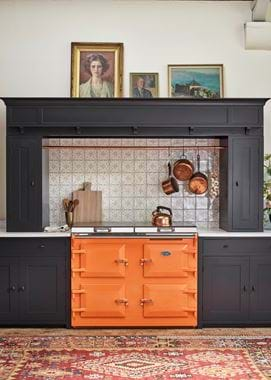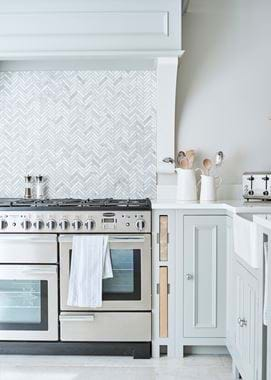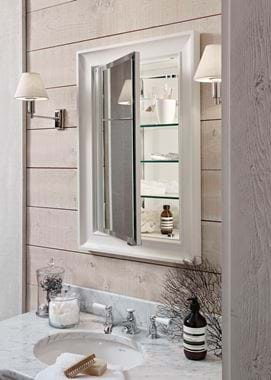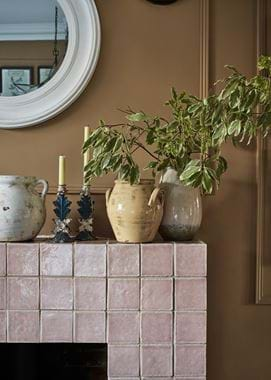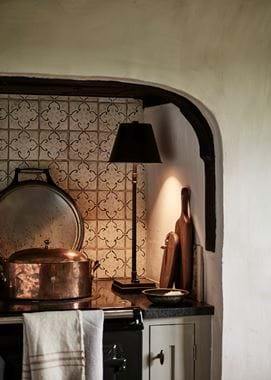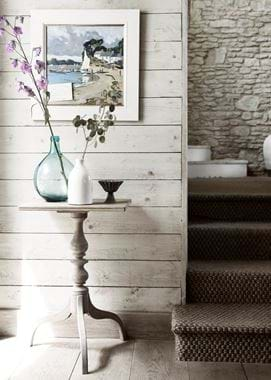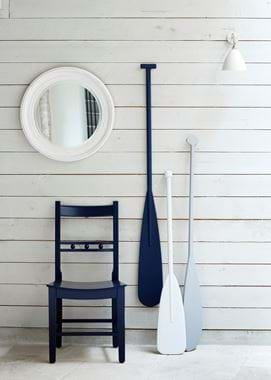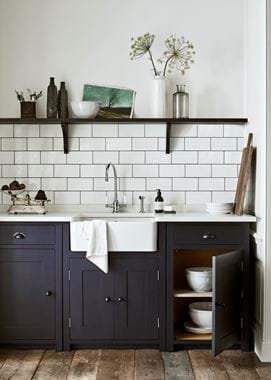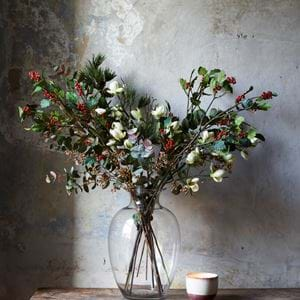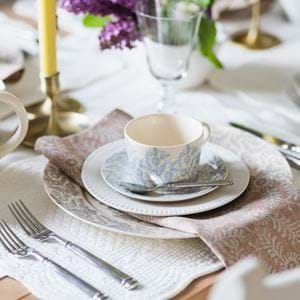Ways with tiles and timber
Ways with tiles and timber
Tiles and wooden wall panelling have a transformative effect. While paint and wallpaper are perfectly lovely options for our walls, tiles and timber offer an alternative that’s quite often practical and not to mention a hugely creative expression that’s welcome in rooms far beyond the bathroom. They’re a form of wall art that’s perhaps a little unsung in comparison to canvases, framed prints and photography. So, this week on the journal, we explore spaces that have tiles and timber cladding at their heart.
Let’s begin in the bathroom
Tiles in the bathroom is an obvious place to start. That’s mostly down to practicality. Splash marks don’t really show, and they’re easily wipeable should you accidentally squirt shampoo or toothpaste onto them. Paint works too of course, but an eggshell finish is much more suited to a bathroom environment. For people who prefer the tone of matt emulsion though, paint soon becomes a bit of a trickier option as water marks it much more easily.
Then there’s the aesthetic side of things. Practical absolutely doesn’t have to mean you sacrifice beauty. Not only is the design of the tiles important, but the way you apply them counts for a lot too. Ceiling to floor is a dramatic look that you could do only on the walls around your shower or behind a bathtub, or it can be repeated on every wall for even greater effect (and, of course, this is the necessary choice if you have a wet-room setup). Bare in mind this can feel a touch cold and echoey though, so alternatively, you might like to tile two-thirds of your wall and paint the upper third.
If you do need an abundance of tiles in your bathroom, there are a few tricks to help soften the effect. Pairing them with timber furniture, like our oak Edinburgh washstand, and wooden floorboards is one (choose an engineered board like our Marton and Savernake collections as these are more stable in a humid bathroom environment). You can also achieve the same thing with rattan and timber accessories: in short, any material with warm-to-the-touch properties. Adding contrast and definition with paint or grout is another way to soften all-over tiling. We would also suggest opting for either a natural tile material, like our Kennet marble collection, or a handmade tile with details like subtle crackle glazing and wavy edges, such as Elcot. Both will add texture and character, and either a calming link with the natural world or a reassuring sense of craftsmanship.
Into the kitchen
The next most-known place to see wall tiles in the home is the kitchen. Just like the bathroom, they let you easily wipe away splashes from the sink and spits from pots on the stove.
Also just like the bathroom, it’s not only which tiles you use in your kitchen that can create interest, but how you use them as well. Consider breaking a few boundaries without feeling try-hard or appearing radical and, instead of using tiles purely in the practical parts of the kitchen, make them the backdrop to open-fronted cabinets and shelving – a simple, easy-to-achieve idea but one that’s incredibly effective. Or, on one wall, the tiling could reach up to the just below the wall cabinetry, and yet on the neighbouring wall, it could stretch from floor to ceiling (evoking the feel of a deli or professional kitchen). You can use tiles to change the pace, to intrigue, and to surprise.
That said, many kitchens are returning to using tiles in a very traditional way: as a backdrop for the centrepiece of the kitchen, the cooker. Naturally, this is a look that works well if you have a chimney breast-style cooker surround with which to frame your tiles, but you can also do the same on a smaller scale. Choose a patterned design here to bring colour, texture and personality as well as a sense of heritage to your kitchen, like the hand-decorated collections created by our tile partners, Marlborough Tiles.
From tiles to timber
Cranbrook is our timber panelling. It’s an option that’s different to paint and wallpaper, much like tiles are, but it translates to every single room and to parts of the home where tiles might not settle in so well, such as the bedroom or the dining room.
We make it from well-seasoned Norwegian spruce – a timber that’s stable as it lives through the seasons and climate changes in our homes. We’ve sanded each plank down so they’re not super rustic, but not so much that they lose all their texture. You can use Cranbrook on walls and ceilings, and it brings such a lot of warmth and personality. It makes you want to reach out and touch.
As standard, we give Cranbrook a washed finish using our Silver Birch paint shade. It gives it a sense of unity that’s easy on the eyes. But look closely, and the texture and slight differences in appearance from the knots and grain tell you that streamlined it may be, but uniform it most certainly is not. It’s a subtle design detail that doesn’t go unnoticed.
Explore our wall coverings collection.

